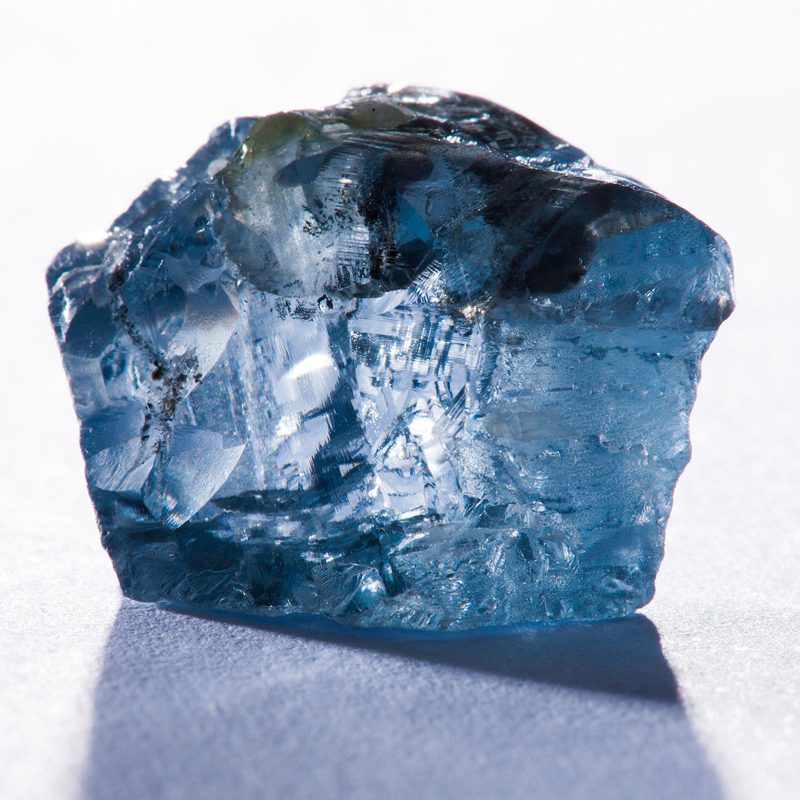 Class: native elements
Class: native elements
Crystal system: cubic
Composition: carbon
Habit: octahedra, cubes, etc., often with curved faces
Refractive index: 2.42
Birefringence: none
Dispersion: 0.044
Specific gravity: 3.52
Hardness: 10
Cleavage: perfect in four directions
Fracture: conchoidal
Luster: adamantine to greasy
Notable locations: South Africa, Botswana, Namibia, and many other African
countries, India, Brazil, Venezuela, Russia, Australia, Indonesia,
Canada, Arkansas in the USA
Colour: pale yellows, browns, grays, and also white, blue, black, pink
red, purple, orange, green, and colourless
The name diamond is derived from the Greek Adamas, meaning
"inconquerable," a reference to its hardness. Diamonds are the hardest
minerals on earth, and because of their luster, high refractive power,
rarity, and resilience, they are the most precious of all gemstones.
Properties and characteristics: Diamonds can be colourless, or may appear
in a range of hues, including yellow, brown, blue, pink, green, and red. They
are transparent to translucent, with some specimens being opaque. These
qualities are dependent on the type and number of inclusions, with graphite
being the most common inclusion. Diamonds are formed in high-pressure
environments in the earth's lower crust and mantle and transported to the
surface by igneous kimberlite pipes. Because of their durability, they are often
recovered from placer deposits. Diamonds can be treated in a number of
ways to change their appearance. Heat, pressure-treatment, and/or irradiation
may be used to encourage a certain tint or colouration or to make a diamond
colourless. Synthetic diamonds have been produced since the 1950s.
Cutting, setting, and valuing: Many diamonds used as gems contain
inclusions, fissures, and other clarity characteristics. A grading system has
been set up to evaluate diamonds based on their clarity as well as their colour
cut, and carat weight. The most popular diamonds are colourless, although
most have a tint (often yellow or brown) that is not always evident to the
untrained eye. Bright yellow diamonds have recently become more popular.
Clear diamonds are much more valuable than yellowish, brownish, or grayish
stones, but intensely coloured "ancies" command high prices. Diamonds are
cut as brilliant, square radiant, and princess cuts, cushions, pears, hearts
marquises, and briolettes, the brilliant-cut is often used for ring centerstones.
